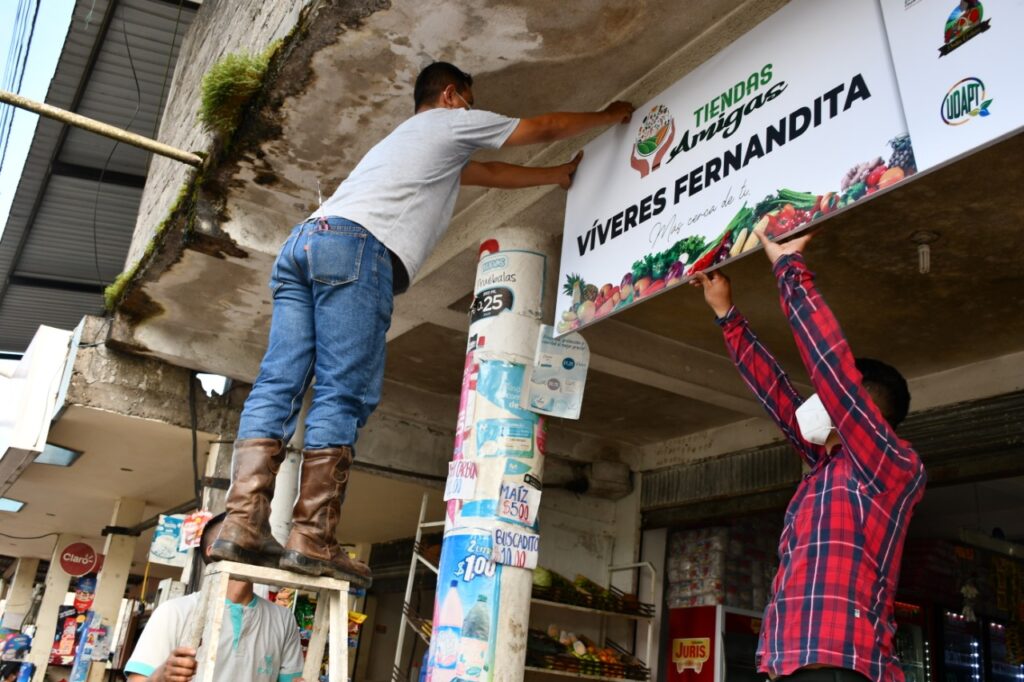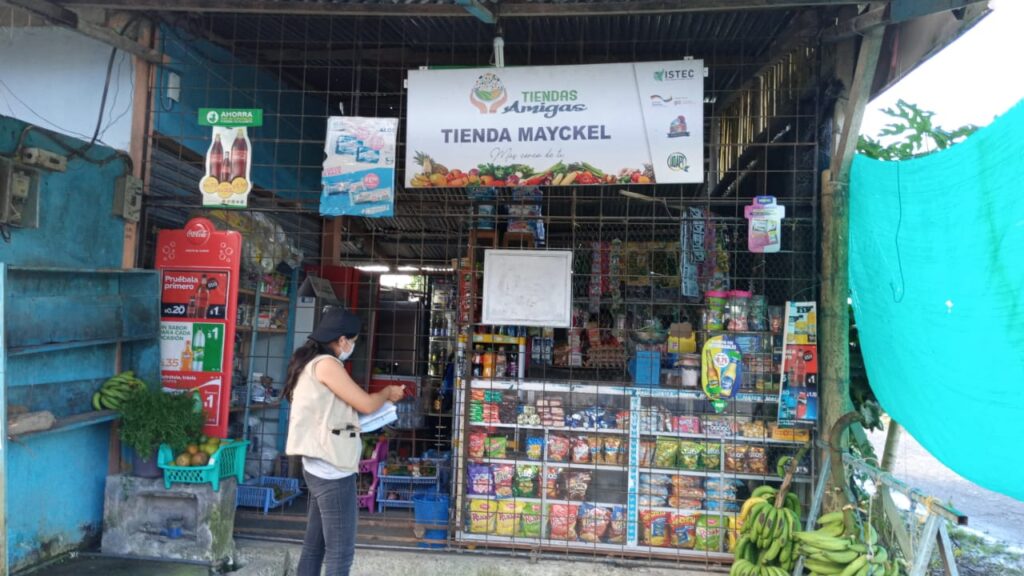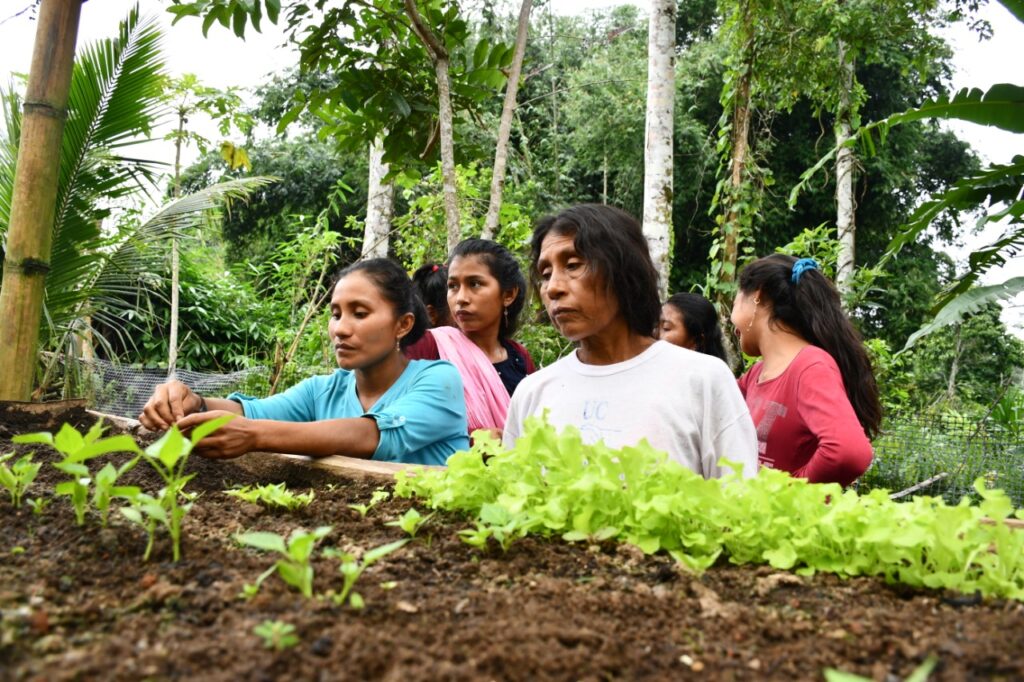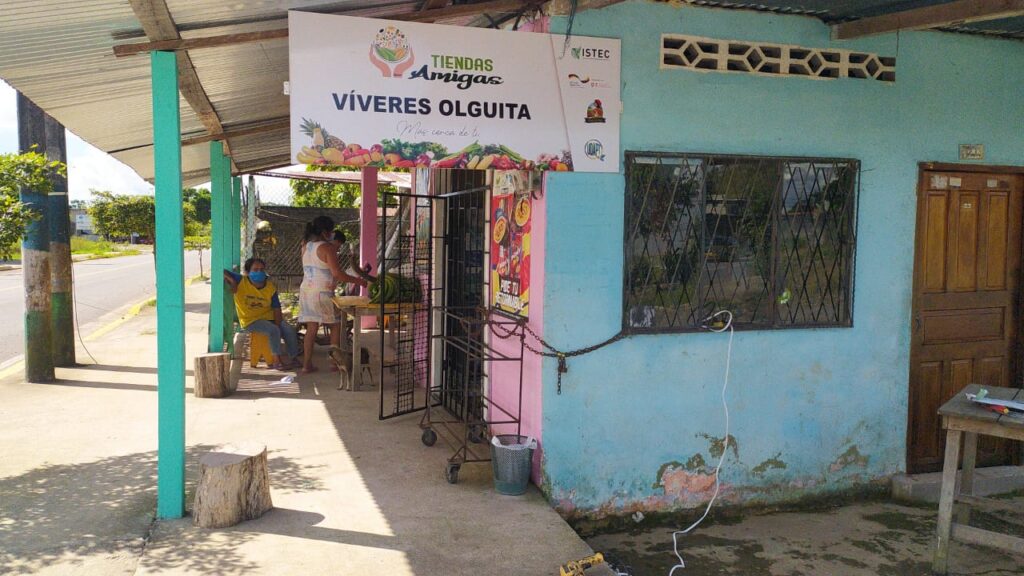Occupy Goes Global!
Lago Agrio
In 2020 OCC! expanded its scope and encouraged students to explore local initiatives in their city, resulting in entries from various locations. Here below you find the entries from Lago Agrio
Scroll for more
In 2020 OCC! expanded its scope and encouraged students to explore local initiatives in their city, resulting in entries from various locations. Here below you find the entries from Lago Agrio
Scroll for more
By Katia Paola Barros Esquivel
Where this grassroots initiative is implemented? Who are the promoters? Who are the beneficiaries?
Tiendas Amigas is a network for the commercialization of peasant products. This project is promoted by the Higher Technological Institute Crecermas (ISTEC), the German cooperation GIZ and the Union of Affected by the Petroleum Operations of Texaco (UDAPT).
This project, constituted as a commercialization network of peasant products, is at the cantonal level, located in Lago Agrio, Sucumbíos province, Ecuador. Tiendas Amigas consists of the distribution of organic crops typical of the area, these products are marketed through peripheral stores of the city called “Tiendas Amigas” that benefit a total of 1780 people in the town. The beneficiaries belong both to the families of the productive farms, as well as to the owners of the stores in the peripheral areas of Lago Agrio.
How this initiative engages with climate? Does it tackle mitigation, adaptation, both or other dimensions of climate change?
The Tienda Amigas initiative addresses both adaptation and mitigation to climate change. The adaptation is approached from the communication, awareness and education measures of the small producers, who supply local and organic products to the peripheral stores called “Tiendas amigas”, who have to adapt to the unfavorable conditions of the environment such as intermittent income, Accelerated urbanization processes, depletion of natural resources and others (Vivas Viachica 2016, 55). In this context, the small producers of Tiendas Amigas have adapted to the new natural conditions of the environment and have even been trained so that their products are organic.
Similarly, in terms of mitigating climate change, this initiative promotes the inner dynamism of neighborhoods, so that internal commerce is strengthened, as well as the local economy and people can make their purchases of daily supplies within their close area in the peripheral stores located (84 so far). Thus, this initiative promotes compact neighborhoods where people can access everything they need on foot or by bicycle.
What are the main objectives? What are the main values?
The main objective is to create a marketing network of small producers that do not compete with each other, but that is a exclusively system to promote their actions. This objective has already been achieved with the implementation of 84 stores located in the peripheral areas of the city of Lago Agrio.
The purpose of the activities of Tiendas Amigas is also to offer fresh organic products (such as: tomatoes, lettuce, potatoes, etc.) to the people of the city, in an accessible way since they are located in neighborhood stores and therefore reduce the distance of mobilization of people to buy basic necessities. In this context, the project’s actions are aimed, on the one hand, at small producers who benefit by selling their products; and, on the other hand, to the population that buys the products in spaces located near their neighborhood.
Indeed, it seeks to improve the population’s diet by offering fresh and organic products accessible by distance to people.
What is the timeline? Are there already visible effects?
“Tiendas Amigas” began its operation in January 2020; taking as a starting point the actions undertaken by ISTEC, an institution that periodically promotes community outreach projects. Thus, it began with the training of producers in terms of prices, construction of orchards, local arable products, organic technification of product cultivation, adaptation to climatic conditions, and others.
Subsequently, the articulation with the peripheral local stores was carried out so that they are the ones that sell these natural and organic products; at the moment they already have a total of 84 neighborhood stores implemented.
With this background, the project stands out since more actors have been added. One of them is the Tarabita Foundation, who help migrants by granting them purchase quotas. Prior to the knowledge of the Tiendas Amigas project, the Tarabita Foundation granted the quota only for a supermarket located in the center of Lago Agrio, so the beneficiaries of this quota had to go to the supermarket. Now, together with the Tiendas Amigas project, stores near migrant neighborhoods have been located so that purchases of basic necessities are made in neighborhood stores, promoting local commerce and reducing large mobilizations for the purchase.
The already visible effects are: the incorporation of new actors to the project, such as the Tarabita Foundation; the strengthening of the internal commerce of the locality; the decrease in daily mobility to make purchases, then non-motorized mobility is strengthened.
Who are the actors involved? What is their background?
Tiendas Amigas is a project that was born from three institutions ISTEC, GIZ and UDAPT
ISTEC is the Crecermas Higher Technological Institute whose mission is “the consolidation of an educational service of excellence that guarantees the training of professionals with the capacity for ethical, moral, cultural, social, humanistic, scientific and technical performance; solidly prepared to respond, with human, scientific and technological quality, to the challenges and demands of a world in permanent change and transformation, in such a way that a comprehensive and sustainable Human Development model is generated in the Ecuadorian Amazon region and specifically in the province of Sucumbíos ”(ISTEC s / f).
The German cooperation GIZ has been working in Ecuador since 1962. Their vision is to “work to shape a future worth living around the world”. Their values are focus on the principles of sustainability ”(GIZ s / f).
Finally, the UDAPT is a non-profit organization that bears its acronym referring to the Union of Persons Affected and Affected by Texaco Petroleum Operations (UDAPT). This organization represents people affected by oil pollution since 1993 and is made up of 6 communities of different indigenous nationalities of Ecuador The Waorani, Siekopaai, Siona, A´I Kofán, Shuar and Kichwa and around 80 peasant communities settled in the area contaminated. It is located mainly in the provinces of Sucumbíos and Orellana in northeastern Ecuador. Its objective is “the repair of the northern Ecuadorian Amazon.”
Are any shortcomings or critical points visible? What other problematic issues can arise from its implementation?
The main difficulty that arose at the time of project implementation lies in the need to educate small producers. First, in terms of their insertion into the market and that they stop producing only for self-consumption, which required an education in the ways of growing in larger quantities, market prices, project benefits, etc.
In this context, a process of socialization and teaching of the farmers was necessary in which they had a transition to go from thinking about producing only for their own consumption, to producing in a way that this action is profitable for them and that they can live by carrying out these activities. This point is highlighted since each teaching process was different, considering that there were farmers with more experience than others.
Finally, another of the drawbacks has been that it has not yet been possible to implement the technological tool that consists of a mobile application to place orders and that allows stores to optimize direct contact with the Tiendas Amigas project; however, the store owners, as mentioned by Rosa (project manager) prefer direct, personalized and order contact.
How would it be potentially replicable in other settings?
The Tienda Amigas initiative is easily replicable in other places as long as coordination and articulation between the three main actors that influence the effectiveness of the project is ensured:
1. Those who provide the service, in this case local stores that sell local products
2. Those who receive the service, people interested in buying local products in stores
3. Those who supply the products, farmers and producers

However, it is pertinent to point out that each sector may have its drawbacks, with respect to the area in which the city is located and the nearby rural area where basic necessities are grown, this due to the fact that the harvest times are different according to the products that are grown.
Is this initiative conducive to broader changes (law, institutional arrangements, long-term sustainability or community preparedness, etc.)? If yes, which?
The project promotes great changes within the city’s neighborhoods. On the one hand, it strengthens farmers, who for a long time in Ecuador have been the sector least served by the technical side. In effect, this future initiative seeks a change in the conception of self-nutrition of families, both farmers and those who benefit from having these products in stores near their neighborhood.
Regarding peripheral stores, in the future, it is expected to create joint work ties with cooperators, strengthening local marketing to (1) reduce travel when buying; and, (2) reduce the mobilization of products that come from other areas, especially Lago Agrio because it is a border city with Colombia, shows a lot of product mobilization, so strengthening the internal marketing and products of the area will reduce the consumption of external products.




References
C40 Cities Climate Leadership Group s/f). Guidance to Design a Green and Thriving City Neighbourhood. ARUP
(ISTEC) InstitutoSuperior Tecnológico “CRECER-MAS”. s/f. Misión y visión. https://istec.edu.ec/istec/mision-vision
GIZ. s/f. Identity. https://www.giz.de/en/aboutgiz/identity.html
(UDAPT) Unión de Afectados y Afectadas por las Operaciones Petroleras de Texaco. s/f. Inicio – UDAPT. http://www.udapt.org/
Vivas Viachica, Elgin. 2016. “Factores que inciden en la sostenibilidad de la pequeña producción agropecuaria en el contexto de Cambio Climático”. En Agricultura sostenible para enfrentar los efectos del cambio climático en Nicaragua. Managua: Diseños Gráficos CG.